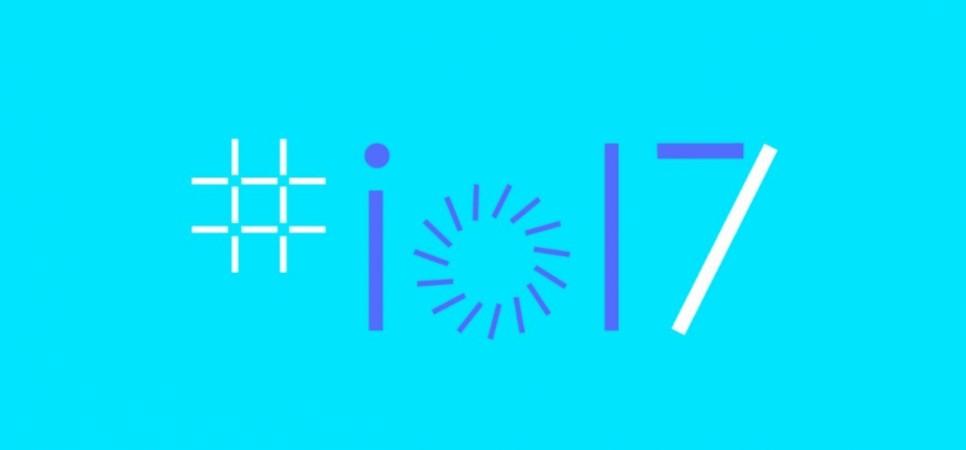
Search engine giant Google on Tuesday kicked off the I/O 2017 event at Shoreline Amphitheatre at Mountain View headquarter.
At its 11th annual developer's conclave, the company made a slew of announcements ranging from software Android O beta program, Android Go for budget phones, to applications such as improvements in Google Photos, Lens, Google Assistant for iPhones and many more.
Here are key highlights of Google I/O 2017:
Google Android O Beta program:
After months of testing under closed doors, Google officially launched the Android O 8.0 mobile OS beta program to registered software developers for further testing, optimisation and building new apps.
Android O, scheduled to be released to the public in August, will bring more fluid experiences to phones and tablets as well as improvements to battery life and security.
It also comes with improved picture-in-picture, which allows users to do two tasks simultaneously, like checking the calendar while planning a party on a Duo video call. And Smart Text Selection improves copy and paste. With the help of machine learning to recognise entities on the screen—like a complete address—users will be able to easily select text they want with a double tap, and even bring up an app like Maps to help during navigation.
With Android O, phone startup will be quicker and the apps load faster, and it is optimised to help prevent phone's battery from draining fast.
Google Android Go:
Google's Android monthly active adoption rate breached the 2 billion mark. In its pursuit for the next billion, Google announced special Android Go OS optimised specifically for entry-level phones with bare minimum hardware (1GB or less RAM) in developing markets like India and Africa.
"Android Go is designed with features relevant for people who have limited data connectivity and speak multiple languages, and comes to life through three key areas: the Android OS, Google apps, and the Google Play Store," the company said in a statement.
Google Daydream-powered standalone VR headgear:
In I/O 2016, Google announced Daydream platform for Virtual Reality (VR) devices and also launched Daydream View headgear, which needs a top-end phone to function. This year, Google intends to go a step further by launching a standalone VR headgear which doesn't require a phone or PC. It is expected to be launched later this year, probably during the unveiling of Pixel 2 series phones.
Google in collaboration with Qualcomm has completed the reference design of the standalone VR gear. It has also tied up with HTC and Lenovo, among others to build a similar product in coming months.
Augmented Reality smartphone Zenfone AR developed in association with Asus, will hit stores this summer.
Read more: Complete features of Asus Zenfone AR
Google 2nd Gen TPU:
Google's CEO Sundar Pichai announced the second generation "Tensor Processing Units", which is said to be made available on Google Cloud, will accelerate a wide range of machine learning workloads, including both training and inference for companies working on Machine Learning.
Each of these new TPU devices delivers up to 180 teraflops of floating-point performance.
"Our goal is to help you build the best possible machine learning systems from top to bottom. While Cloud TPUs will benefit many ML applications, we remain committed to offering a wide range of hardware on Google Cloud so you can choose the accelerators that best fit your particular use case at any given time," Google said in a statement.
Google Lens in Photos and Assistant:
One biggest announcement from Sundar Pichai was the launch of Artificial Intelligence (AI)-powered Google Lens, which turns an ordinary camera to a smart search engine.
Google Lens is capable of understanding what pictures the user is taking and provides information of the subject in the photo. For instance, if the users take a snap (via Google Photo app) of a hotel and tap Google Lens option, it automatically connects it to Google search function and gives hotel's timings, menu card, reviews and table booking option.
It is currently incorporated in Google Photos and Google Assistant applications and will be compatible with any device running Android Marshmallow or later versions.
Read more: Everything you need to know about Google Lens
Improvements to Google Home:
The company announced that Android device owners will now be able to set appointments or reminders, make hands-free phone call, use Spotify's free music offering, as well as Soundcloud and Deezer on Google Home.
Google has promised to add visual response feature to the Home, where it will be push image-based information right into Android phone, Android TV , third-party TVs via Chromecast.
For instance, users will be able to see Assistant answers on the biggest screen in your house, whether you're asking "what's on YouTube TV right now?" or "what's on my calendar today?"
In addition to new features, Google also announced that the Home will now be compatible with more than 70+ smart home partners including August locks, TP-Link, Honeywell, Logitech, and LG.
Google Assistant for iPhones and more languages support:
Company's most popular feature AI-based Google Assistant, which was launched in late 2016 to select eligible Android devices, has reportedly breached 100 million mark.
In a bid to expand the user-base, Google Assistant has been made available in Apple iPhones. But, we are not sure, if it will be able to find traction among iOS device owners, as Google Assistant cannot replace Siri, and it has very limited functionality compared to on Android devices.
On a positive note, the company has added more language support for Google Assistant including Brazilian Portuguese, French, German and Japanese, and by the end of the year, the Assistant will support Italian, Korean and Spanish.

















